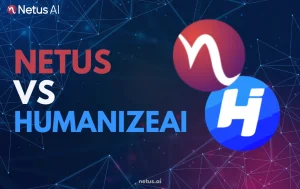
Netus vs. HumanizeAI | Netus.ai
Netus.ai vs. HumanizeAI: Which tool excels in AI bypassing, human-like rewriting or academic reliability? Dive into this detailed breakdown comparing features, accuracy or use cases.

Content writer and editor for Netus.AI
Using a Plagiarism Calculator. The landscape of content creation is rapidly expanding, with more creators vying for their own distinct voice. As the competition grows, it becomes increasingly challenging to differentiate between good and average quality content. Many writers turn to online tools, such as plagiarism calculators, which provide a measure of reassurance that their work stands apart from the rest without compromising originality.
At the heart of unique content is the ability to showcase one’s authentic thoughts and ideas. Plagiarism not only deceives readers but also undermines the credibility of the writer. By crafting genuine content, writers can provide their audience with fresh perspectives, giving due credit to the original creators. It is essential to understand that plagiarism extends beyond mere duplication of words; it includes stealing images, paraphrasing, and even borrowing inspiration from someone else’s ideas without proper acknowledgement.
Plagiarism is a widespread issue in both academic and professional settings. It can be present in research papers, reports, and even blog posts. Two main types of plagiarism exist: intentional and accidental.
Intentional plagiarism occurs when someone knowingly uses another person’s work without permission. Conversely, accidental plagiarism happens when writers fail to properly cite sources or attribute acknowledgment, leading to unintentional duplicate content.
In some cases, writers might inadvertently repeat their own words, phrases, or ideas when working on multiple projects, resulting in self-plagiarism. Anti-plagiarism checker tools can detect these instances.
Plagiarism has a significant impact on both academics and professionals, regardless of the type. Some potential consequences include:
Ultimately, avoiding plagiarism is essential for maintaining integrity in all forms of writing and research handling.
Content theft can severely harm the reputation and career of writers, students, and professionals alike. In cases where the content is protected by copyright, offenders may also face financial penalties and legal action. This includes potential discontinuation of professional contracts for freelancers.
For brand promotion, websites and writers often receive rewards, but the presence of duplicate content can tarnish their image. Moreover, search engines are equipped with mechanisms to deal with copied content by identifying the original source and directing users to it.
To summarize:
It is crucial for all involved parties to be proactive in preventing plagiarism and maintaining a respectable reputation.
Easy access to information through technology is a double-edged sword, contributing to the rise in plagiarism among students and professionals alike. While technology helps detect duplicate content, it also enables writers to take shortcuts due to a lack of creativity.
In the academic world, schools and universities face the challenge of maintaining academic integrity. With multiple time-sensitive assignments, students might be tempted to plagiarize others’ work to meet deadlines. Additionally, using copyrighted content without proper authorization leads to copyright violations, which bear similar consequences to plagiarism.
To combat this issue, educational institutions must continuously enforce methods of detection and encourage originality in both personal essays and research papers.
One key element of crafting unique content is having a thorough understanding of the topic. Acquiring knowledge through reading and research allows you to shape your writing effectively without relying on others’ work.
In order to produce unique writing, it’s important to explore themes that haven’t been widely covered yet. Familiarizing yourself with the work of contemporary writers can help you identify the common and untouched areas, allowing for a healthy competition that results in better quality content. Tools like content similarity checkers can compare two documents to aid in this process.
Another crucial aspect is to consider the style and format of your writing based on the preferences of your target audience. Avoid lengthy and monotonous sections and instead use clear, easy-to-understand language. Varying your sentence structures will also help maintain the readers’ interest.
Paraphrasing and summarizing can also result in plagiarism if not done carefully. The goal is to create content that reflects your own views, opinions, and experiences instead of copying someone else’s work. When paraphrasing, consider using synonyms for all words except generic terms in order to avoid plagiarism issues. Plagiarism calculators can easily detect improperly paraphrased or summarized content.
Lastly, incorporating online tools that calculate plagiarism percentage can help ensure your content is original and safe to publish. These tools often require you to upload your document and, within a few minutes, provide you with a result that points out any instances of plagiarism. This allows writers to make necessary changes by removing plagiarized words and phrases, while also serving as a valuable method of proofreading.
By following these guidelines and using a plagiarism calculator, you can craft unique content that resonates with your audience and sets you apart from the competition.
Students can ensure academic integrity by regularly using a plagiarism checker while writing their assignments. Before submitting their work, they should:
Free plagiarism detection tools are beneficial for several reasons:
To accurately check for plagiarism online, follow these steps:
Turnitin is a widely used plagiarism detection software in academia for several reasons:
Other tools, such as Scribbr, may offer similar feature sets but may differ in terms of database size, accuracy, and integration capabilities. It’s essential to choose the tool that best meets your needs.
Plagiarism checkers that support PDF files are reliable and function similarly to text input methods. They work by:
When choosing a plagiarism checker for academic writing, consider the following features:

Netus.ai vs. HumanizeAI: Which tool excels in AI bypassing, human-like rewriting or academic reliability? Dive into this detailed breakdown comparing features, accuracy or use cases.
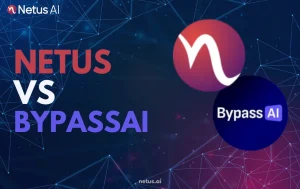
Netus.ai vs. BypassAI: Which tool excels in AI bypassing, human-like rewriting or academic reliability? Dive into this detailed breakdown comparing features, accuracy or use cases.
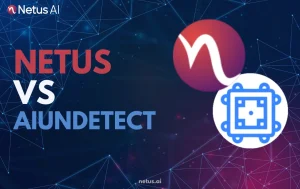
Netus.ai vs. AIUndetect: Which tool excels in AI bypassing, human-like rewriting or academic reliability? Dive into this detailed breakdown comparing features, accuracy or use cases.

Netus.ai vs. AIUndetect: Which tool excels in AI bypassing, human-like rewriting or academic reliability? Dive into this detailed breakdown comparing features, accuracy or use cases.
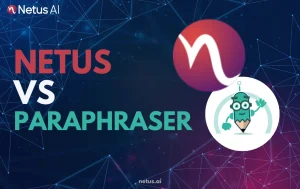
Netus.ai vs. Paraphraser: Which tool excels in AI bypassing, human-like rewriting or academic reliability? Dive into this detailed breakdown comparing features, accuracy or use cases.
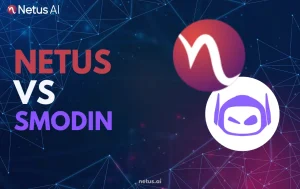
Netus.ai vs. Smodin: Which tool excels in AI bypassing, human-like rewriting or academic reliability? Dive into this detailed breakdown comparing features, accuracy or use cases.
@ 2024 Netus AI.